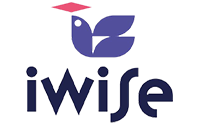The iWISE Olympiad Engineering Category was created to encourage aspiring engineers to engage in an interactive approach to studying engineering. This category focuses on Biomedical Engineering, Chemical Engineering, Civil and Industrial Engineering, Electrical and Electronic Engineering and Mechanical Engineering projects.
Based on the mission to provide an interactive approach to engineering and focus on key subcategories, here are the objectives and evaluation criteria for the iWISE Olympiad Engineering Category.
Objectives for the Engineering Category
– Encourage innovative problem-solving: Motivate students to apply engineering principles creatively to solve real-world problems within the subcategories of Biomedical, Chemical, Civil and Industrial, Electrical and Electronic, and Mechanical Engineering.
– Promote interdisciplinary interaction: Encourage students to engage with a variety of engineering fields to develop a broader understanding of how different disciplines work together to solve complex problems.
– Bridge theory and application: Provide a platform for students to translate theoretical knowledge learned in the classroom into tangible, working prototypes and practical solutions.
– Instill systematic design thinking: Encourage students to follow the iterative engineering design process, from identifying a problem and defining criteria to building, testing, and refining a solution.
– Reinforce technical skills: Provide hands-on opportunities to develop practical skills, such as using equipment, designing components, and analyzing data, within their chosen engineering subcategory.
– Cultivate comprehensive project management: Train students in essential project management skills, including planning, resource management, and documentation, by requiring thorough project notebooks and reports.
– Enhance technical communication: Equip students with the ability to clearly and effectively communicate their project’s purpose, design, methodology, and conclusions to both technical and non-technical audiences.
– Showcase global talent: Offer a platform for students to present their innovative work to a global community of peers and experts, providing valuable networking and feedback opportunities.
– Develop ethical awareness: Encourage students to consider the societal, economic, and ethical impacts of their engineering solutions, fostering a sense of responsibility and professionalism.
Aspiring engineers can explore the Engineering Category through various subcategories:
Biomedical Engineering
Chemical Engineering
Process Engineering
Civil & Industrial Engineering
Electrical & Electronic Engineering
Mechanical & Aeronautical
Mining & Metallurgical
- Click on the Registration Tab
- Select one of the Virtual Finals
- Fill in your details.
- Fill in your selected category details on the corresponding form.
- Select your available time for the Judging process.
- Submit your zoom judging session.
- Proceed to payment.
- Complete your submission.
Evaluation criteria for the Engineering Category
Judging is based on the project’s technical execution, innovative approach, and the student’s understanding and communication of their work.
Technical and engineering rigor
– Engineering approach and problem definition: Is the problem clearly stated? Does the project propose a workable, relevant, and well-defined solution to a genuine need?
– Design and construction: Was a logical and well-documented design process followed? Is the construction feasible, cost-effective, and safe? Judges will look for evidence of trade-off analysis and how alternative solutions were considered.
– Thoroughness and analysis: How thoroughly was the problem investigated? Were the conclusions drawn from sufficient data and rigorous analysis? Were the limitations of the data or design recognized?
– Testing and results: Was the prototype adequately tested under simulated conditions? Does the solution perform effectively and represent a significant improvement over existing alternatives?
Creativity and innovation
– Originality of concept: Does the project’s idea or approach show a high level of originality? Is the student’s solution or methodology unique and not merely a replication of existing work?
– Ingenuity: Was there ingenuity in the design or use of equipment, materials, or methods to achieve the project’s goals?
– Creative interpretation: Does the student show innovative thinking in their interpretation of results or their proposed solution?
Communication and presentation
– Written materials: Is the project report clear, well-organized, and professionally presented? Is the use of visuals like diagrams, charts, and graphs effective?
– Oral presentation and interview: Can the student confidently and clearly discuss the project’s purpose, process, and findings? Do they answer questions knowledgeably and without relying on memorized speeches?
– Project display: Does the visual display effectively communicate the project’s key information, including its process, data, and final results?
Subcategory alignment and impact
– Relevance to engineering discipline: Does the project clearly apply principles from the chosen subcategory (e.g., Civil, Mechanical)?
– Societal impact: Does the project demonstrate an awareness of the potential broader impacts of the solution, including environmental, economic, and social factors?
– Independent work: Is there clear evidence that the student was the primary driver of the project, with adult assistance limited to guidance rather than direct work?
Requirements for Virtual Finals:
Participants must out together the following documents for their STEM Projects:
Project Abstract
Project Portfolio
PowerPoint Presentation
No theme for this category.
Group submission is up to 3 participants
Requirements for Global Finals:
Participants must put together the following documents for their STEM Projects:
Project Abstract
Project Research Plan
Project Portfolio
Poster
Prototype (If Applicable)
PowerPoint Presentation (Optional)
No theme for this category
Group submission is up to 3 participants.
